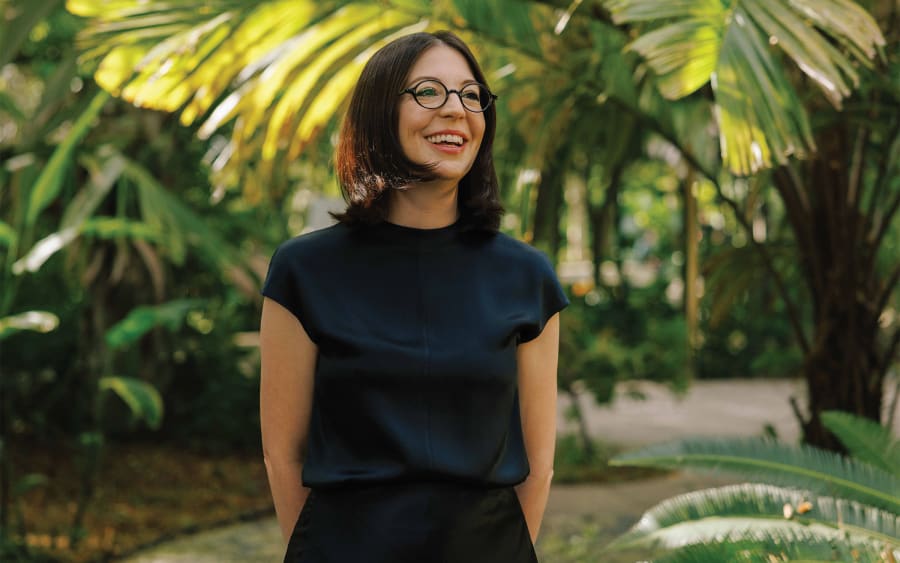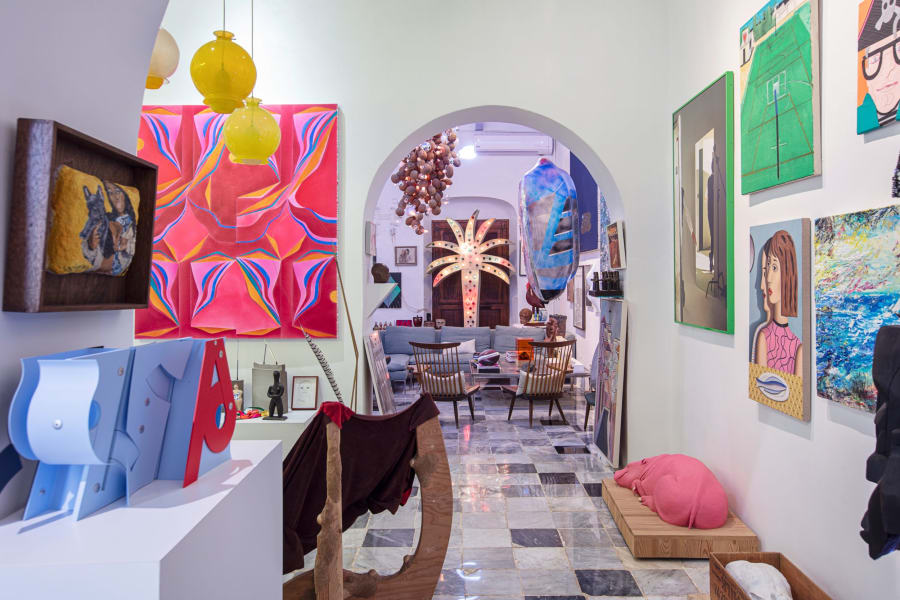In a sense, Agosto Machado is a living testament to the influence and power of downtown New York. He was an activist at the Stonewall Uprising and performed at the Pyramid Club in its heyday. He hung out at Andy Warhol’s Factory. He lost many, many friends from his creative community to the AIDS epidemic in the 1980s.
To document that history, Machado creates shrines: precisely conceived and exquisite altars of items that acknowledge the people who impacted not only his life, but also cultural history. They are potent and beautiful, but still, he’s uncomfortable with calling himself an artist.
‘I’m sort of like an archivist,’ Machado says, sitting in his narrow East Village apartment, lined with boxes filled with memories. ‘I put things together in tribute to all the wonderful people who’ve been through my life, but you should use a small ‘a’ if you consider me an artist.’ Machado – who doesn’t share his age – began creating the shrines in the 1960s with a simple goal: ‘to honor and respect.’
‘I believe that as long as your name is alive, your spirit is there,’ he says. ‘All these people contributed so much to our culture collectively, even though they’re not acknowledged.’ The altars include images, keepsakes and ephemera related to New York’s most individualistic and creative cognoscenti, including Marsha P. Johnson, Peter Hujar, Jack Smith, Ethyl Eichelberger, Holly Woodlawn, David Wojnarowicz, Jackie Curtis and Candy Darling.
‘Having worked alongside so many brilliant artists, he’s figured out a way to translate all of this performance-based activity into these very spiritual objects that can really communicate their history,’ says Stuart Comer, the Lonti Ebers chief curator of media and performance at The Museum of Modern Art, which has Machado’s piece Shrine (White) (2022) in its permanent collection since 2022.
At Art Basel Miami Beach, a handful of the shrines will be shown in the Positions section of the fair by Gordon Robichaux, the New York gallery that has been working with Machado since 2021. (A Hujar portrait of Machado will also be on display.) Included will be pieces like this year’s Ethyl (Altar), an homage to Eichelberger, which includes matchbooks from the legendary club Max’s Kansas City and the Broadway hangout Sardi’s, an ad from S. Klein (a long-defunct department store where many drag queens bought their clothes) and, among other things, assorted postcards, photographs, coins, a compact and a glittery mask.
The altars both document his colleagues and experience and make them tangible for younger generations. ‘He’s built a world and a collection that also tells the tale brilliantly, and he has this magical ability, having performed on many of New York’s most interesting underground stages, to really translate things for a public that would otherwise have disappeared,’ Comer says. ‘I see him as more than just a witness – he really is an icon in his own right,’ Comer adds. ‘He’s living history embodied.’
This article was originally commissioned for the 2024 issue of the Art Basel Miami Beach Magazine.
Agosto Machado is represented by Gordon Robichaux (New York). His work will be on view in the Positions sector of Art Basel Miami Beach 2024, taking place from December 6 to 8, 2024. Learn more here.
Rachel Felder is an author and journalist based between New York and Miami. Her work has appeared in The New York Times, The New Yorker, Vogue, the Financial Times, Women’s Wear Daily, and many other publications. Her most recent book, Red Lipstick: An Ode to a Beauty Icon (HarperCollins), examines the enduring appeal, glamour, and history of makeup’s most beloved staple.
Caption for header image: Agosto Machado, Untitled Altar, 2022. Courtesy of Gordon Robichaux. Photograph by Ryan Page.
Published on November 26, 2024.


